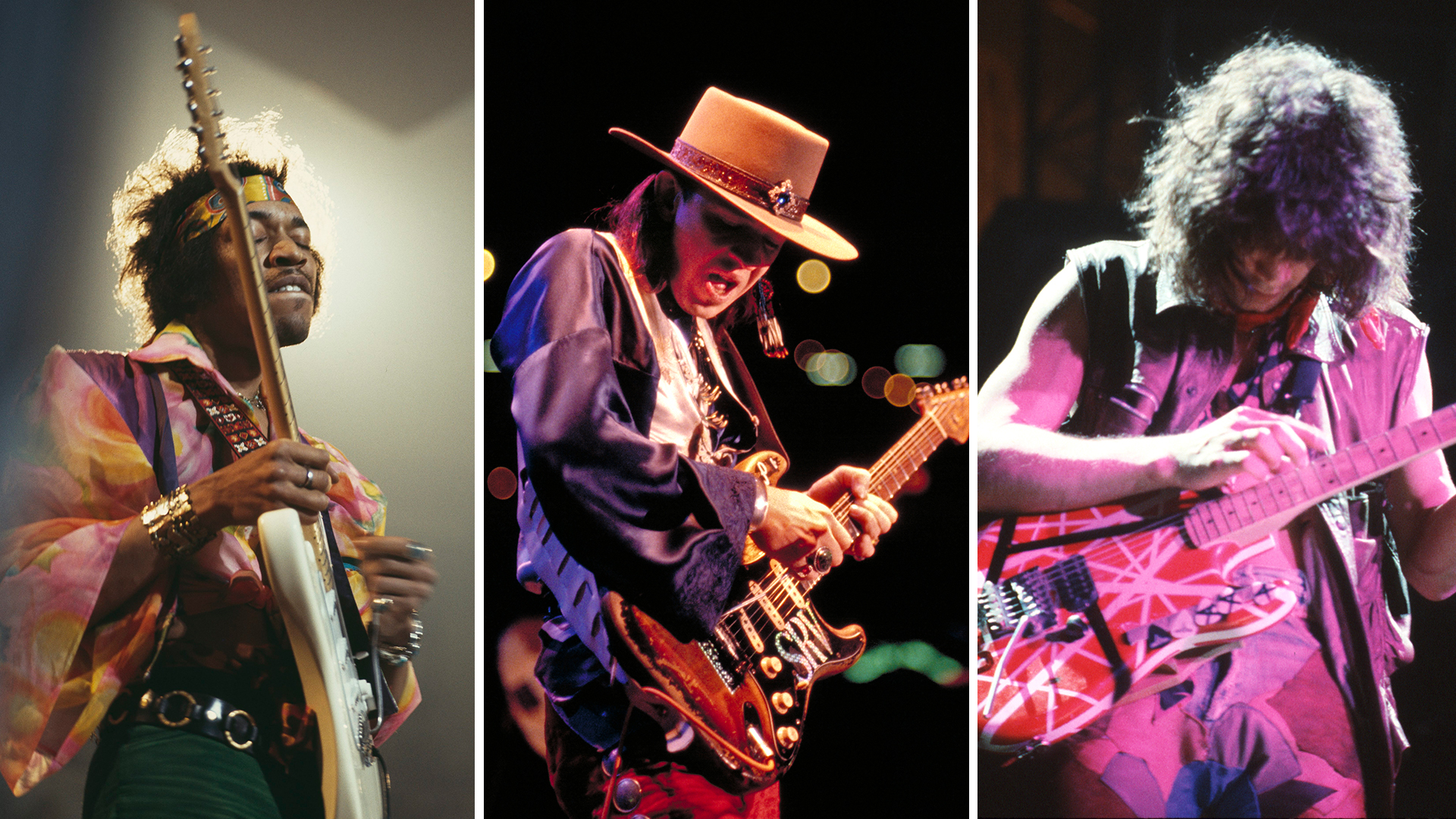From Stevie Ray Vaughan, to Hendrix and Eddie Van Halen – the cover song is a musical rite of passage for every great player, but it's not without its challenges... here are 6 tips for nailing a cover version
With a cover song, you've already got a head start – the song is already written – but that creates its own limitations. Here is how you can put your own spin on another artist's track

It would be interesting to read the data on what percentage of guitar players have at one point in their journey not performed a cover of another artist’s song. We’d be shocked if it was not close to 100 per cent.
Name a guitar great and there’s more than likely an iconic cover associated with them. Whether it’s Slash’s take on Knockin’ on Heaven's Door with Guns N' Roses, Eddie Van Halen's re-working of You Really Got Me, Stevie Ray Vaughan's Little Wing or, of course, Jimi Hendrix’s iconic reinterpretation of All Along the Watchtower, the cover has become a rite of passage.
For novice and blue-chip pro alike, the cover song is an essential part of being a musician, allowing us to pay homage to influences, maybe even bring something out in another musician’s song that the songwriter missed. But what makes a great cover song? And how can we put our own spin on tracks that have already established themselves in the pop-cultural consciousness?
Well, here are six tips to keep in mind when adding a cover to the set.
1. Re-harmonise
This idea works well with songs that are written using chords entirely within one key signature: simply change one of the chords. Take the most basic I-IV-V chord progression in C – that’s C-F-G. If your chosen cover follows this progression, try swapping out an F or G for an Em or Am – all these chords use notes from the key of C major so they’re sure to sound like they belong.
2. Capo up!
If you’re singing, you’ll need to be at a pitch to suit your voice, and, of course, a capo can help with this – but it’s also a vital creative tool. For example, try using your capo around the 5th to 8th fret and you’ll get a more mandolin-like sound from an acoustic guitar. It can put a sweet new slant on beefy-sounding open position chords.
3. Who needs a hook?
We’d say most of the covers in our poll re-create the main riffs of their original tracks – but it’s not a hard and fast rule. When Eric Clapton covered his own Layla for MTV Unplugged, he dispensed with the blazing line from the 1970 original, with guitarist Andy Fairweather Low outlining the chords before Eric comes in with some tasteful blues licks.
All the latest guitar news, interviews, lessons, reviews, deals and more, direct to your inbox!
4. Specialise
Chris Thile’s bluegrass/mandolin version of The White Stripes’ Dead Leaves And The Dirty Ground is an example of how specialising in one style gives a fresh new take that’s a guaranteed departure from the original. We can’t all boast Thile’s virtuosity, but it’s quite easy to, say, think ‘rock’ whilst covering a soul song, for example.
5. Power Up!
The easiest starting point for many songs is the chord progression. If you’re looking for ways to put your own mark on a progression, try starting by playing only powerchords. So, wherever there’s a major, minor, sus, 7th chord or similar, just play a simple powerchord. You’ll drill down to the bare bones of the song this way and you can ‘rebuild’ the harmony with other instruments or vocals.
6. Melody rules
While fingerstylists tend to use a lot of simple arpeggios, often it’s better to home in on a song’s vocal melody. Try keeping chord picking and arpeggios to a minimum, favouring the main part of a vocal melody instead. This may seem the more complex approach, but it’s rewarding. Learn from the master and listen to Tommy Emmanuel’s version of The Beatles’ Here Comes The Sun.
Total Guitar is one of Europe's biggest guitar magazines. With lessons to suit players of all levels, TG's world-class tuition is friendly, accessible and jargon-free, whether you want to brush up on your technique or improve your music theory knowledge. We also talk to the biggest names in the world of guitar – from interviews with all-time greats like Brian May and Eddie Van Halen to our behind the scenes Rig Tour features, we get you up close with the guitarists that matter to you.



